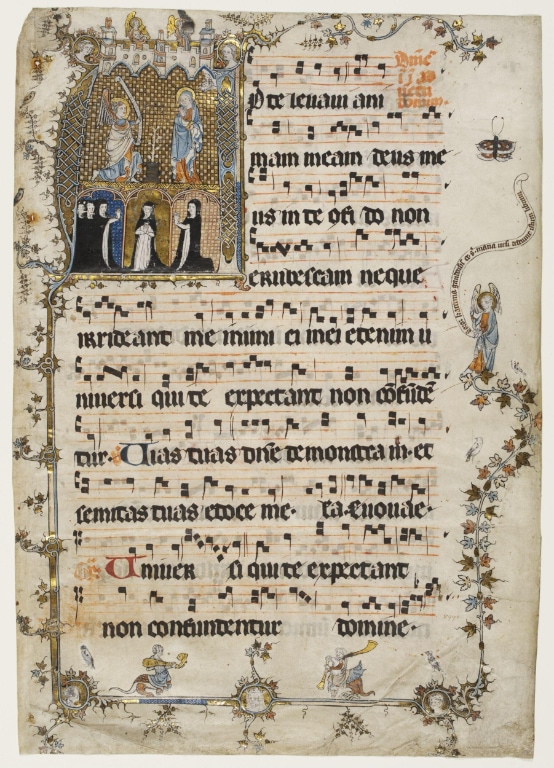Leaf from a Gradual with an Historiated Initial ‘A’ showing the Annunciation

Unknown Artist
Leaf from a Gradual with an Historiated Initial ‘A’ showing the Annunciation
Netherlands, about 1330
Water-based pigments, gilding and ink on parchment, 470 x 322 mm
Victoria and Albert Museum (No. 8992)
In this cutting the medieval device of inserting scrolls as speech bubbles is used to represent the relaying of important information. This historiated initial has the Angel Gabriel holding one while speaking to the Virgin Mary about her about her pregnancy. And in the margin, another angel tells the singer about the patrons of this Dominican Gradual. Speech is visualised in this cutting to emphasise the importance of the information, reflecting the significance of auditory devotion.
From out of the mouth of Angels
The marginalia on this page tells the audience a lot about its history. As seen by the angel in the margin holding a scroll. Speaking to a future reader of the manuscript, the angel tells them that: ‘Sister Katerina of Ghent and sister Maria Ursi gave this book’. The naming of women patrons on this leaf shows how specifically this prayer and its auditory experience was important to the women who commissioned and interacted with the book.
Musical grotesques on musical pages
The grotesques in the marginalia at the bottom of the page also show the purpose of the manuscript as a book containing music. The human aspects of the grotesques are vaguely woman-like and they are playing musical instruments. They show how the making and decorating of the original manuscript was very specific to the use of the manuscript for auditory devotion through music which was performed by women. The grotesques play instruments at the bottom of the page and on top of the initial in an architectural structure angels also play instruments. It seems that on this page the decoration is always linked to the theme of auditory devotion.